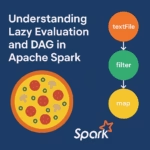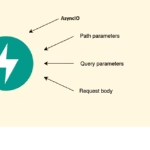In the fast-paced world of artificial intelligence, chatbots are evolving from simple Q&A tools into complex, intelligent systems capable of reasoning, planning, and collaboration. Imagine a chatbot that doesn’t just respond to your queries—it actively analyzes data, uses external tools, and works with other AI agents to deliver nuanced answers.
Thanks to technologies like Google’s Agent-to-Agent Protocol (A2A), the Model Context Protocol (MCP), and the LangChain framework, this level of AI orchestration is now possible.
In this tutorial, we’ll break down each of these technologies, show how they work together, and build a multi-agent chatbot for real-time stock news analysis.
🚀 Why Multi-Agent Systems Matter
Traditional bots are deterministic—they do exactly what you program. But AI agents can operate more autonomously. Using standardized protocols, agents can share tasks, call external APIs, and make decisions based on context.
This is the leap from simple automation to true collaboration.
🧠 Key Technologies Explained
🛠️ Model Context Protocol (MCP)
MCP defines how AI agents interact with external tools. Think of it as giving an AI the ability to “use functions” like a developer does.
With MCP, an agent can:
- Fetch stock data via API.
- Run a sentiment analysis script.
- Query a database.
- Use specialized libraries or cloud tools.
🤝 Agent-to-Agent Protocol (A2A)
A2A governs how agents communicate. It creates a network where:
- Agents can discover each other.
- They assign tasks among themselves.
- They share results and synchronize.
This allows specialization and delegation—each agent focuses on what it does best.
🔗 LangChain: The Glue Holding It Together
LangChain is a framework for building LLM-powered applications. It supports:
- Defining individual agents.
- Connecting to external tools (via MCP).
- Managing communication between agents (via A2A).
- Creating complex workflows.
LangChain acts as the conductor of your AI orchestra.
🧪 Real-World Use Case: Stock News Analyzer Bot
Let’s say a user asks, “What’s the latest sentiment on Tesla stock?”
🧩 Agent Roles
- News Scraper Agent
- Pulls articles from financial APIs (like NewsAPI).
- Uses MCP to fetch real-time data.
- Sentiment Analysis Agent
- Processes each article using NLP techniques.
- Classifies as positive, negative, or neutral.
- Summary Agent
- Aggregates insights into a concise update.
- Returns the final answer to the user.
🧱 LangChain-Based Conceptual Implementation
Here’s a simplified Python snippet using LangChain to model this system:
from langchain.agents import initialize_agent, Tool
from langchain.llms import OpenAI
from langchain.chains import LLMChain
from langchain.prompts import PromptTemplate
# Define tools (simulate MCP-like behavior)
def fetch_stock_news(stock_symbol):
return f"Latest news for {stock_symbol}: [Fake API response here]"
def analyze_sentiment(text):
return "Positive" # Simulated response
def summarize_news(news, sentiment):
return f"Summary: Sentiment is {sentiment}. Articles suggest optimism."
# Define agent tools
tools = [
Tool(name="NewsFetcher", func=fetch_stock_news, description="Fetch news for a stock"),
Tool(name="SentimentAnalyzer", func=analyze_sentiment, description="Analyze sentiment"),
Tool(name="Summarizer", func=summarize_news, description="Summarize sentiment and news"),
]
# Initialize orchestrator
llm = OpenAI(temperature=0)
agent = initialize_agent(tools, llm, agent_type="zero-shot-react-description")
# Simulated interaction
response = agent.run("What's the sentiment on Tesla stock?")
print(response)
✅ Benefits of This Architecture
- Scalability: Add new agents without disrupting others.
- Modularity: Swap tools and models easily.
- Interoperability: Use different models for different tasks.
- Real-time capability: Pull data and act dynamically.
🧩 Pro Tips for Implementation
- Use LangGraph (LangChain’s state machine tool) for complex workflows.
- Secure A2A communication with authentication and scoped permissions.
- Cache results when possible to optimize performance.
- Monitor agent interactions with logs and visual graphs.
🔚 Final Thoughts
Combining A2A, MCP, and LangChain doesn’t just add more moving parts—it builds a collaborative ecosystem. Your chatbot becomes more than reactive; it becomes strategic.
Whether you’re building a stock advisor, a health assistant, or a customer support hub, this architecture unlocks a new level of AI sophistication.


